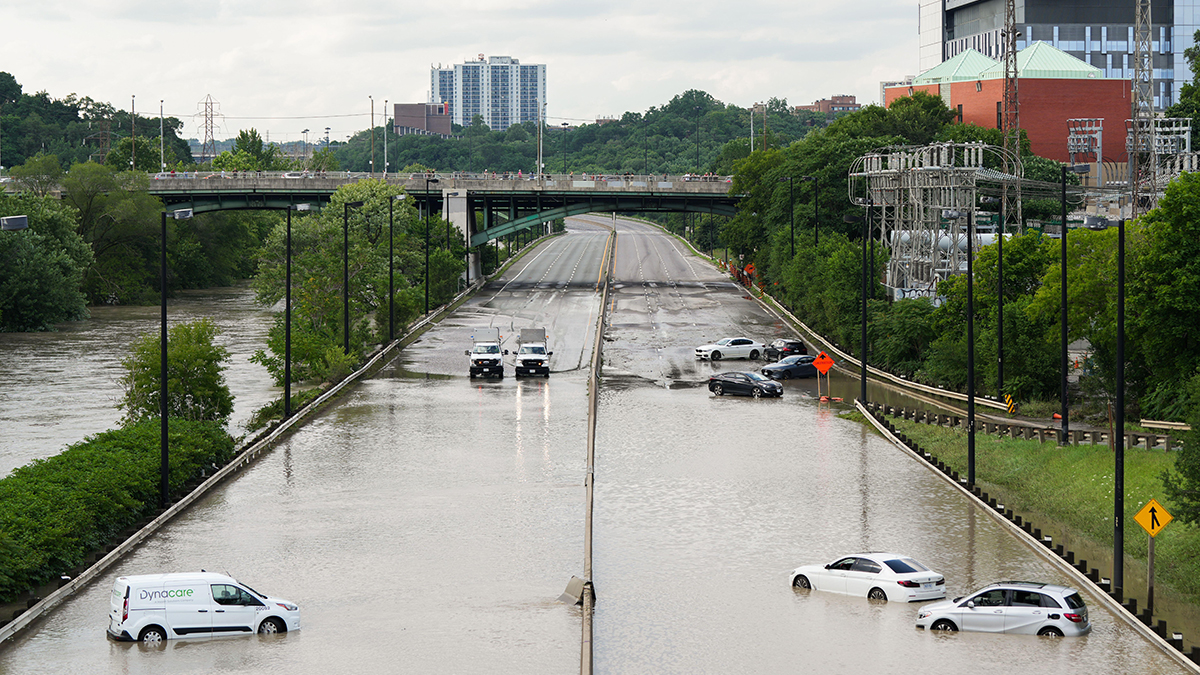Inland waterways are vulnerable to climate change
‘With waterborne freight still one of the most sustainable transport methods, stakeholders attuned to the emerging and growing threat of climate-related risks will be best placed to respond and capture future opportunities,’ Marsh says
Research by Marsh details how low and high water levels each exacerbate the challenge of navigating inland routes
Many of the world’s busiest ports rely on inland waterway navigation for accessibility, but these routes are particularly vulnerable to the effects of climate change, according to a new report by Marsh.
If water levels are low but still navigable, the report says, vessels may be required to reduce their load factors and carry fewer goods. This means the ratio between actual loading and total capacity decreases. During Europe’s drought in 2022, for example, low water levels in the Rhine River led to a 75% reduction in cargo capacity on some vessels.
When the load factor of multiple vessels is reduced in periods of low water, the report says, the costs per tonne of transported goods increases. Furthermore, where vessels operate with a reduced cargo capacity, more trips are required to carry the same quantity of goods, likely increasing the amount of carbon emissions released.
Flood problems
Low water levels are not the only challenge affecting navigability levels. Flooding events associated with high water levels, the report says, are becoming increasingly common with climate change. Marsh McLennan analysis shows since 1980, the number of flood disasters has increased 181% globally.
High river levels impact the ability of vessels to navigate channels, it continues, because of fast-moving water and over-full channels, which increase the likelihood of delays and accidents occurring in waterways. During high water levels, locks may face operational restrictions or closure and during extremely low water levels, there may be limited water available to fill the locks.
“The waterways of the future may look radically more engineered and managed compared to where they are today,” the report says.
“By spearheading breakthroughs and by way of strategic investment,” it continues, “all stakeholders can drive improvements and build resilience in key waterways worldwide, while mitigating potentially catastrophic outcomes. With waterborne freight still one of the most sustainable transport methods, stakeholders attuned to the emerging and growing threat of climate-related risks will be best placed to respond and capture future opportunities.”
The report, Navigating waterways: climate change implications for the maritime sector was co-authored by Marsh’s head of climate and sustainability risk, Nicholas Faull.
In an interview with Insurance Day, Faull outlines the benefits and limitations of the three main insurance solutions the report highlights. These are trade disruption insurance (TDI), parametric insurance and Sentrisk.
TDI solutions can address the financial impact of supply chain disruption for all stakeholders as well as manufacturers, suppliers and others affectedby supply chain volatility.
“TDI is an existing insurance, which is one of its advantages, but the line sizes are relatively limited, which reduces the ability for it to be widely deployed,” Faull says.
Contingent business interruption is the most widely used existing insurance solution, rather than TDI, but it is only triggered by damage, for example to property.
“There’s no standardised way of deploying parametric insurance in this context, so finding opportunities to deploy it requires upfront work. Once it’s been deployed, however, it could be replicated quite easily”
Nicholas Faull
Marsh
“Contingent business interruption is widely used, but it has a narrow application,” Faull says. “TDI is quite broad in scope, because it can cover a whole range of different trade disruptions, but the capacity sitting behind it is more limited.”
Parametric solutions
The report describes how parametric solutions can provide financial coverage for property damage and business interruption when a river is above or below a certain water level. Parametrics respond to movements of an independent index – such as a river’s water levels – rather than the occurrence of an event or a specific loss of value.
“Parametric insurance is a mechanism that’s based on a certain trigger and that means it has the flexibility to be deployed in areas more traditional insurances are not,” Faull says.
Parametric insurance is thus a “bespoke” offering and its time has come, Faull stresses, since its application because of climate change is becoming more relevant.
“The flip side is there’s no standardised way of deploying parametric insurance in this context, so finding opportunities to deploy it requires upfront work. Once it’s been deployed, however, it could be replicated quite easily,” he adds.
Sentrisk – Marsh McLennan’s artificial intelligence-powered platform designed to reduce supply chain vulnerabilities – is helping to transform supply chain risk exposure into business opportunities by reducing volatility and avoiding losses.
Faull says: “One of the key bits of information our clients don’t have is visibility into the tier two and tier three suppliers that are very often the source of disruptions to their supply chains and broader business models. The Sentrisk platform enables us to give clients that visibility.”
He adds: “It’s important in the insurance context because that information can then be used to inform contingent business interruption policies for clients and that is a very widely used component of property damage business interruption policies and so better information about the extent of their supply chain network enables the existing policies to be much more effective.”




